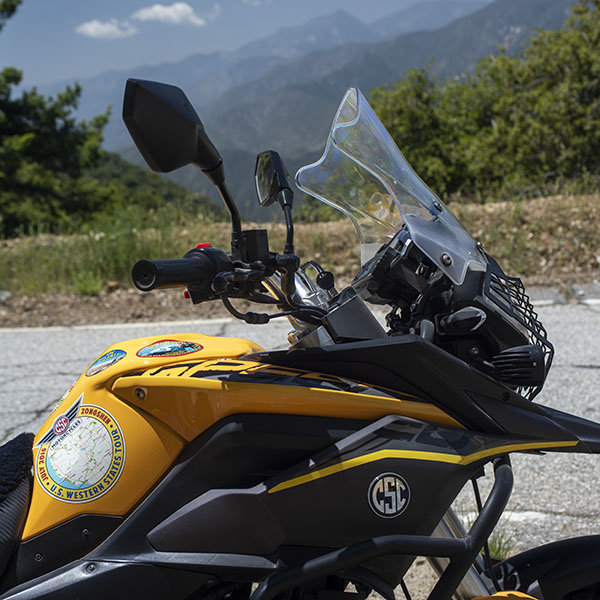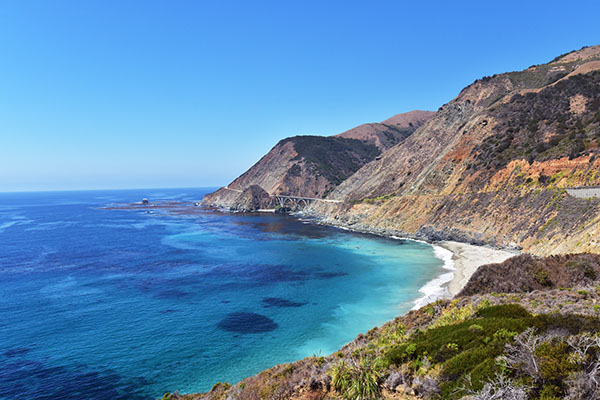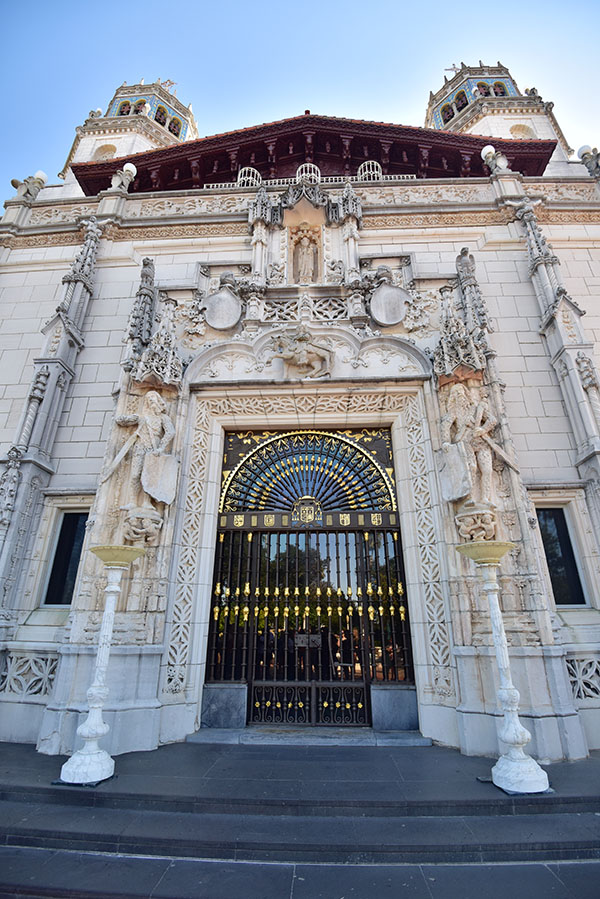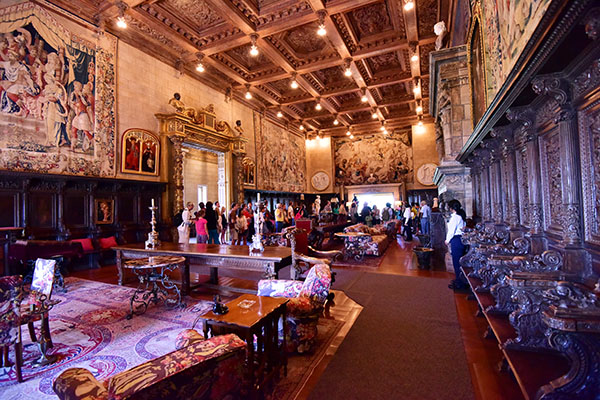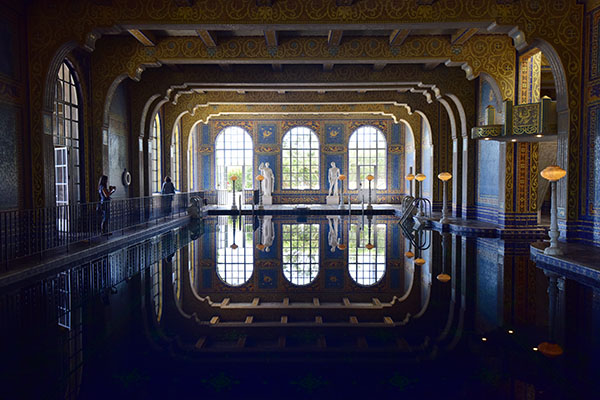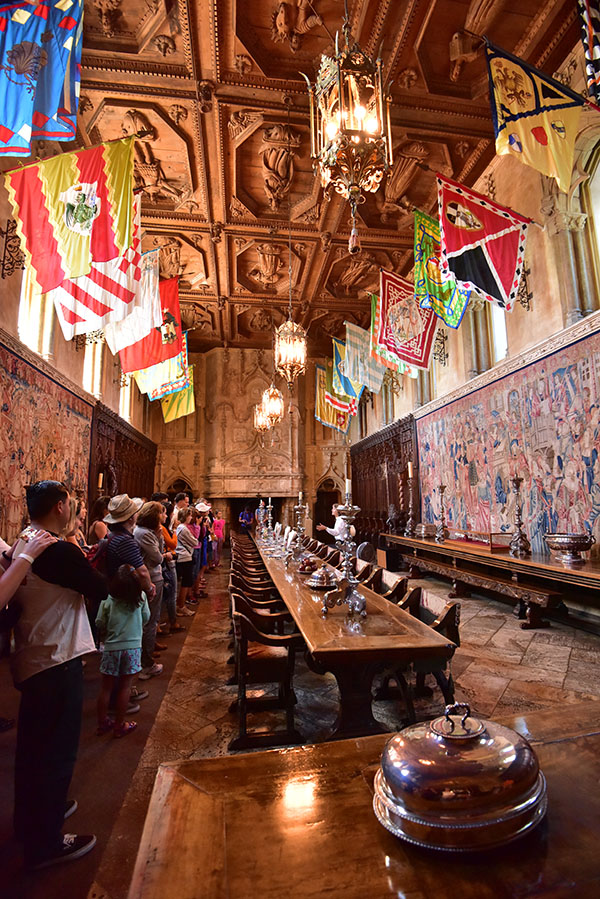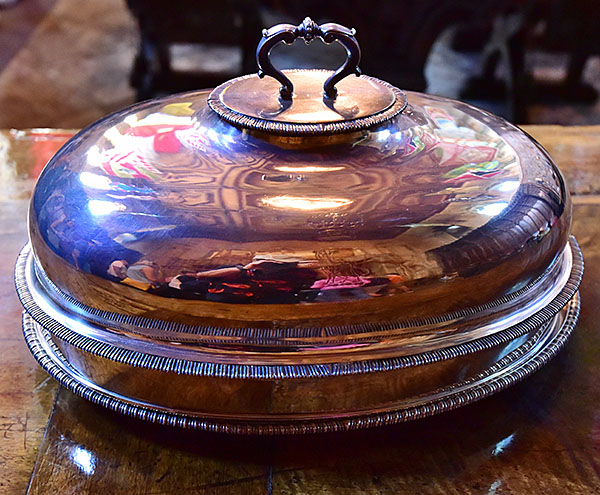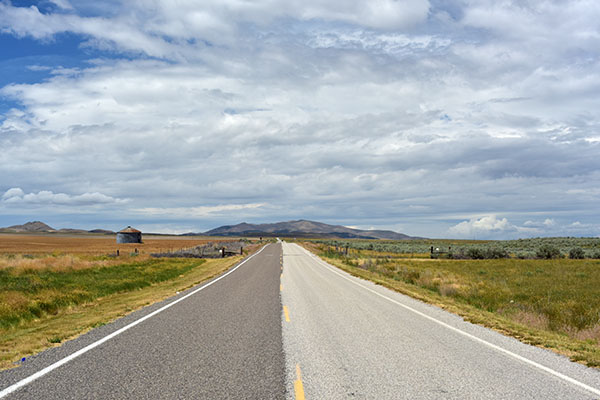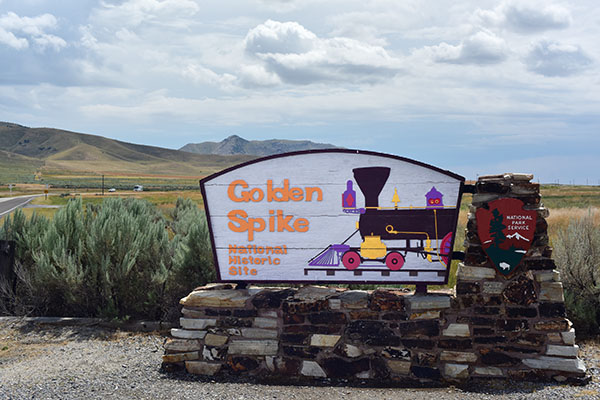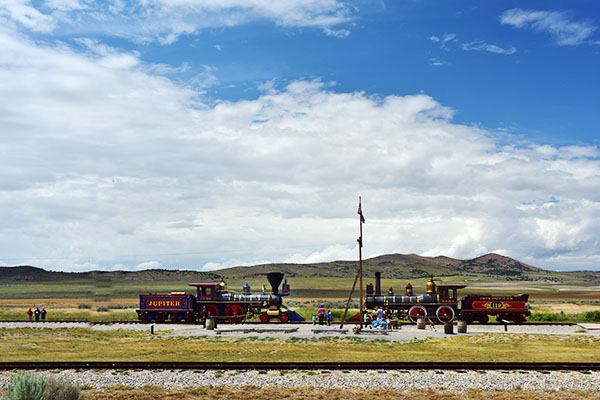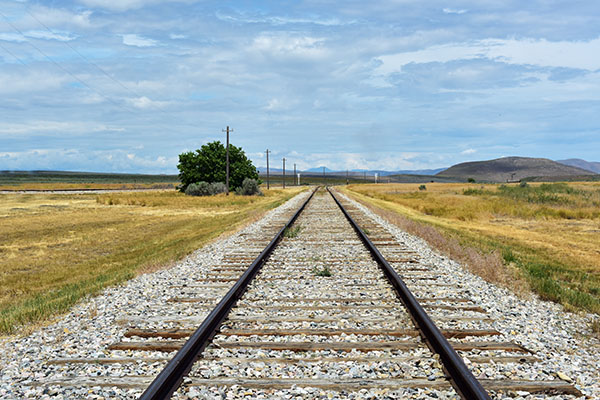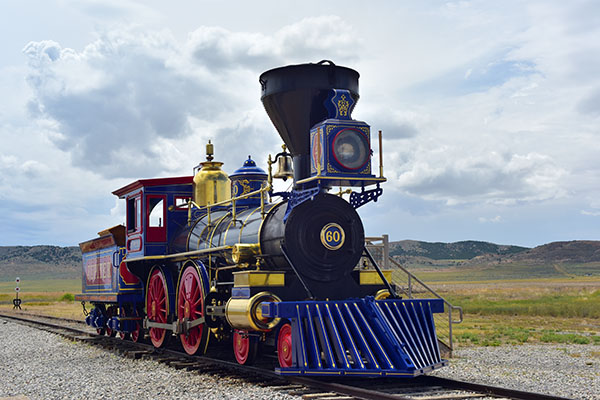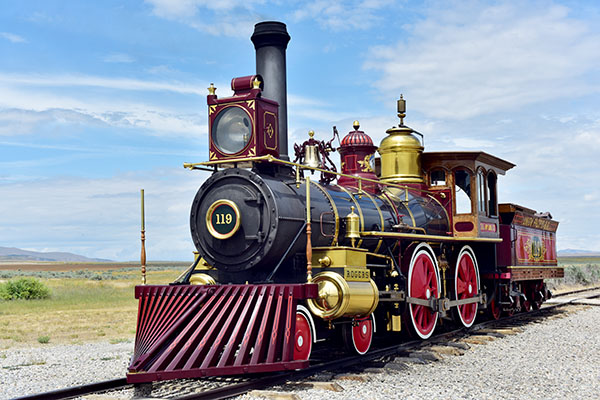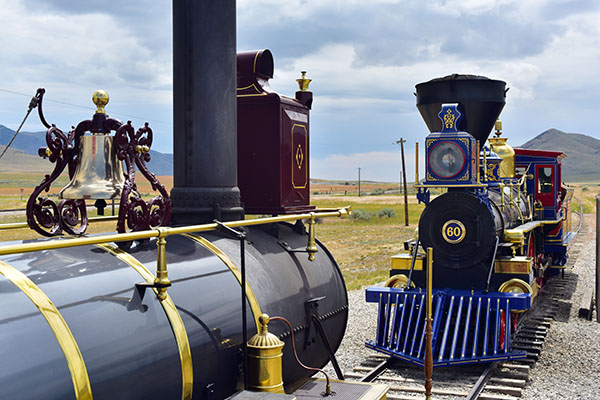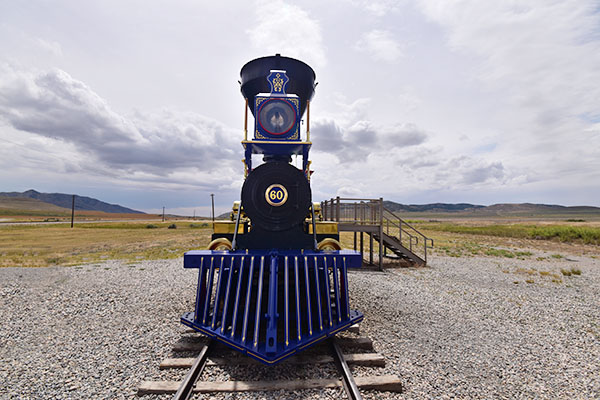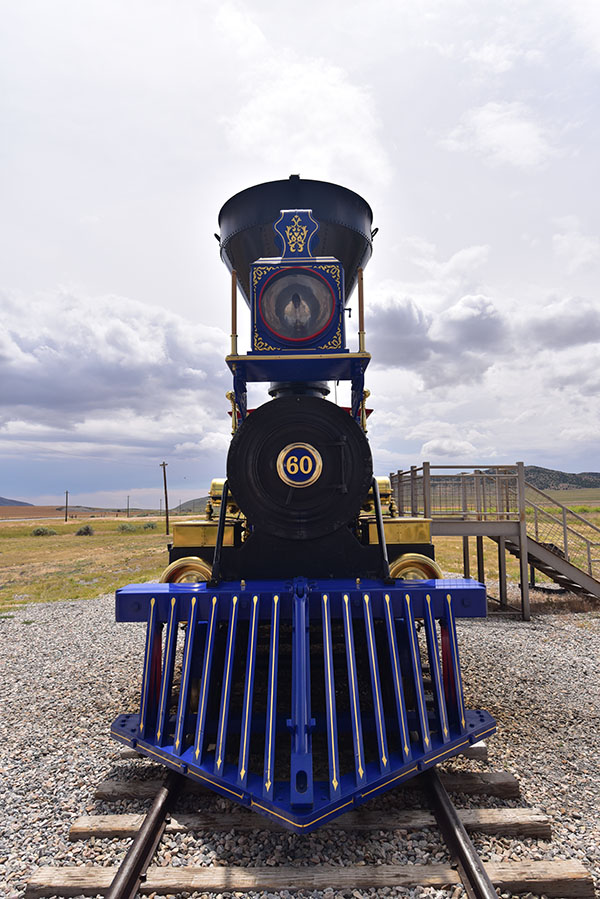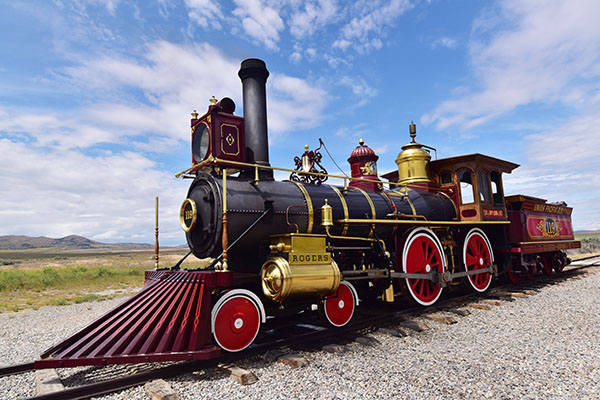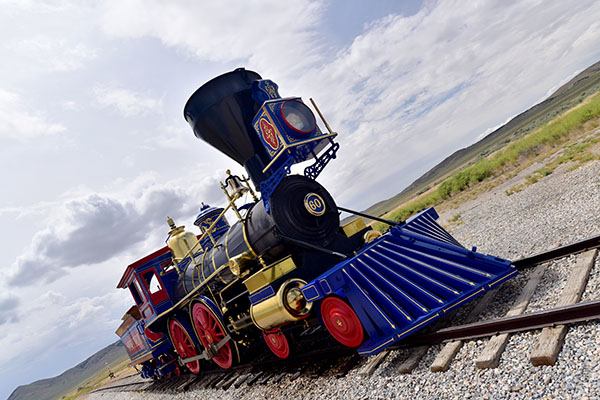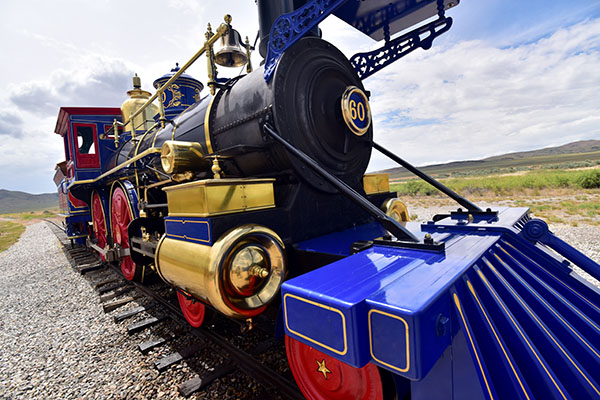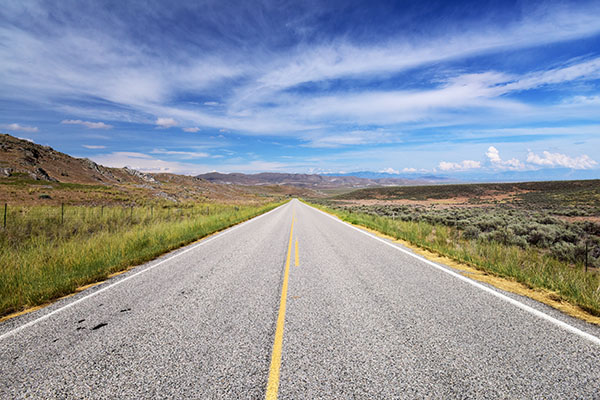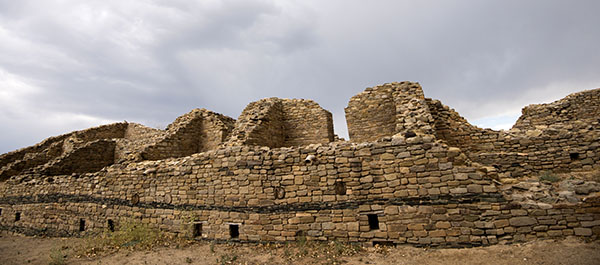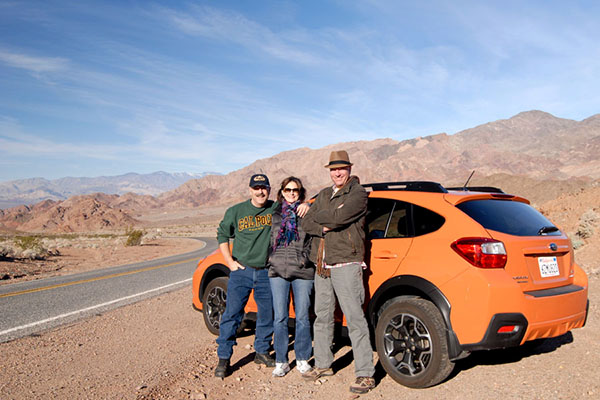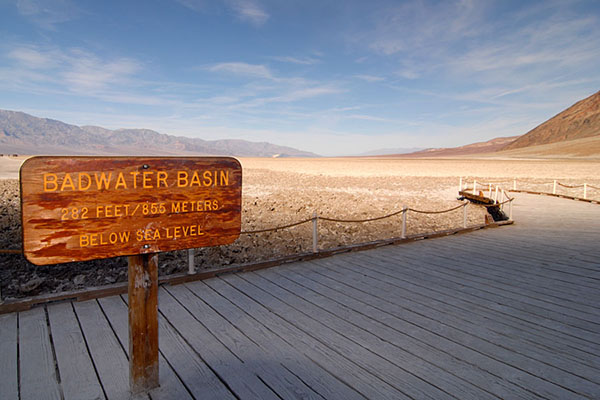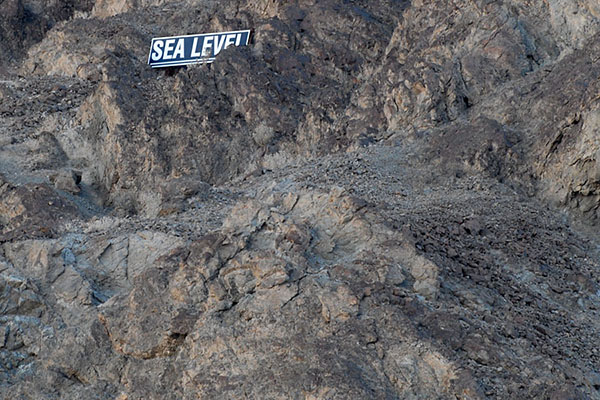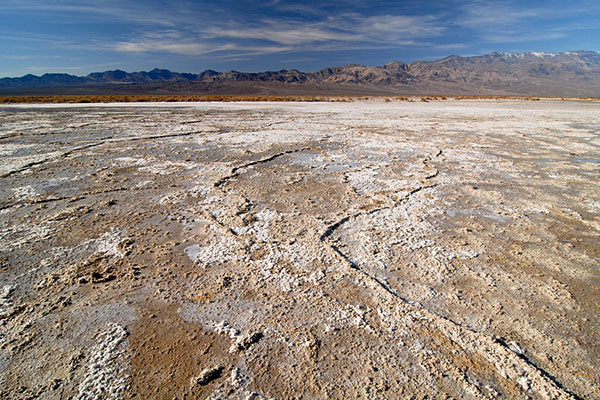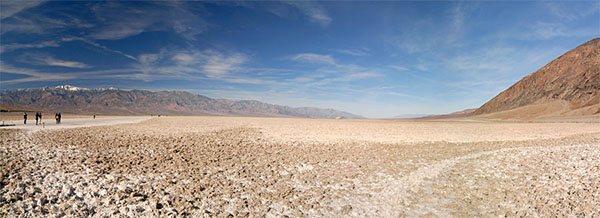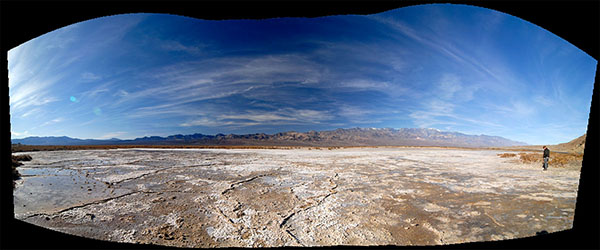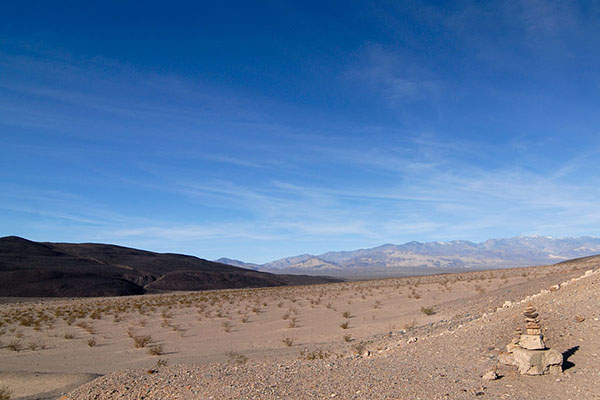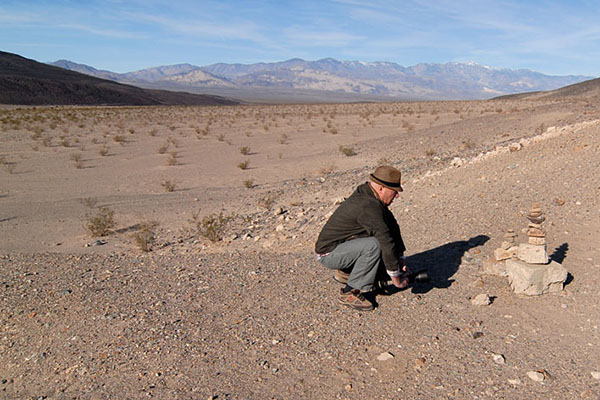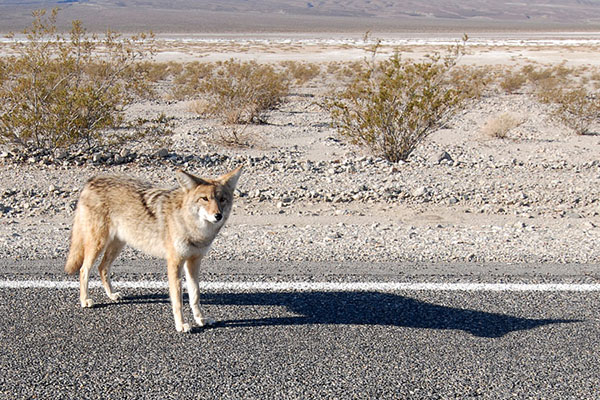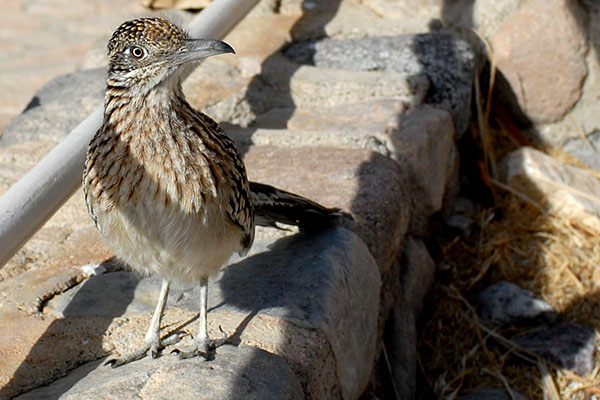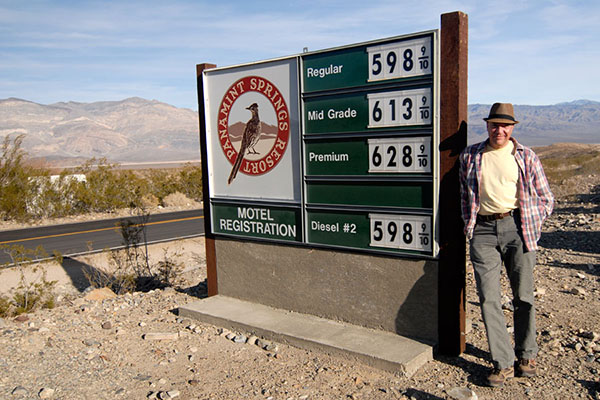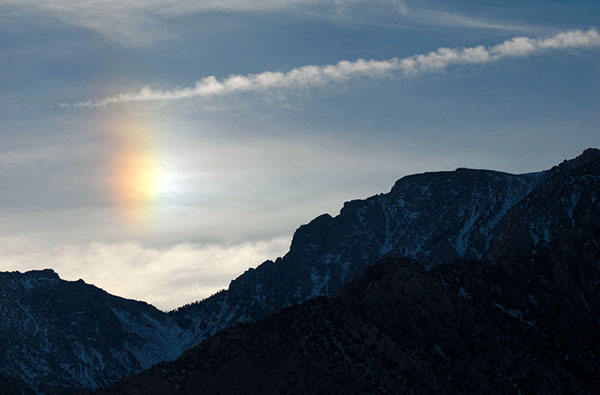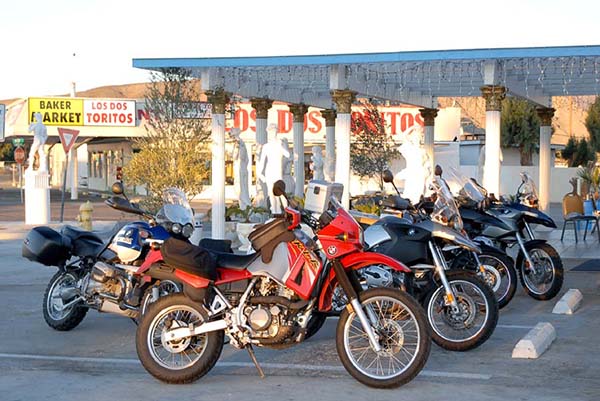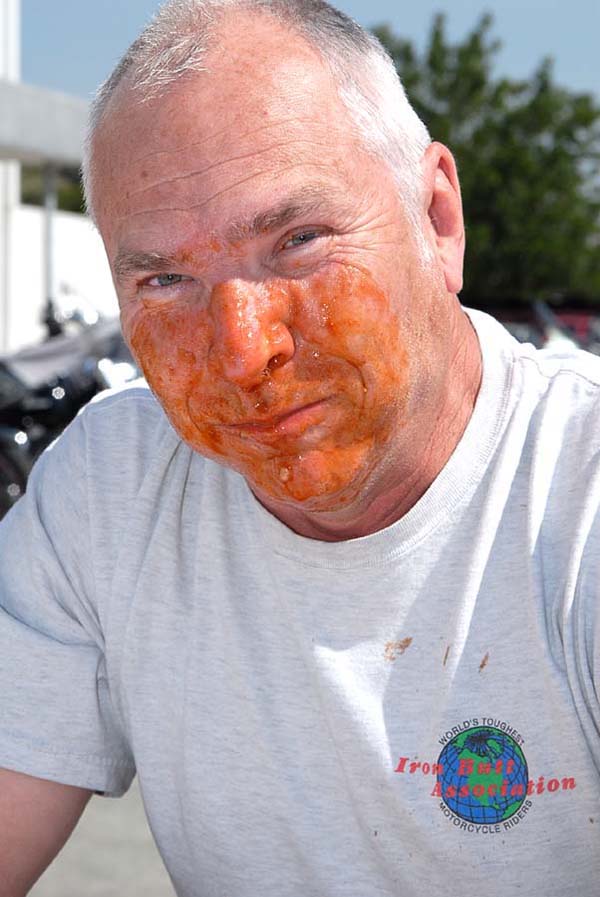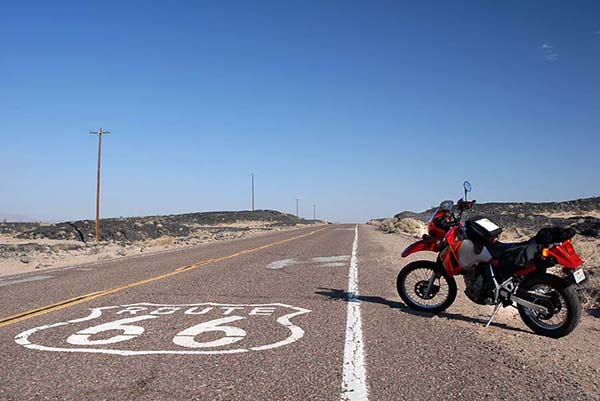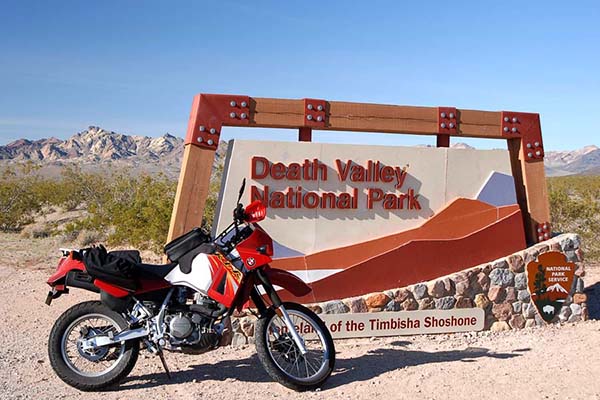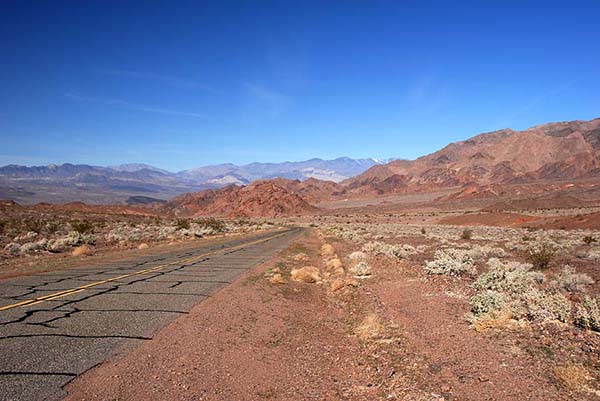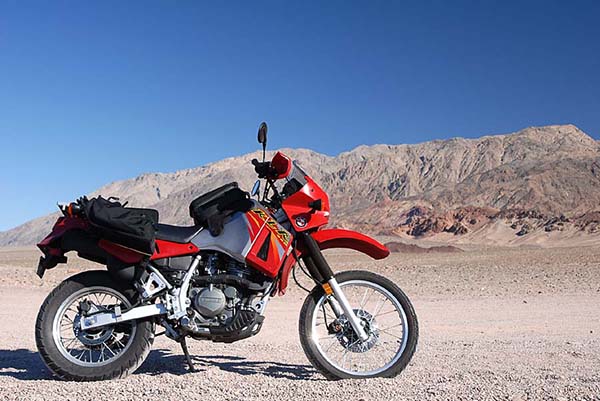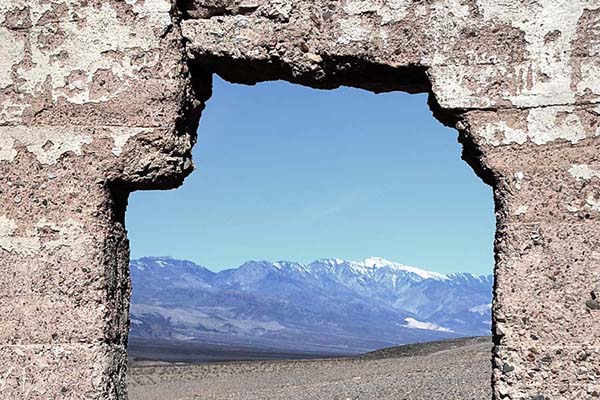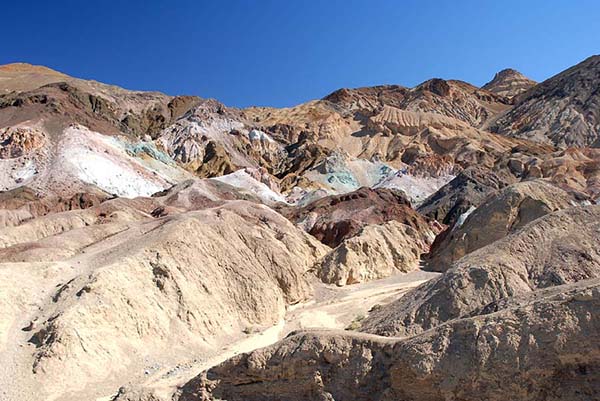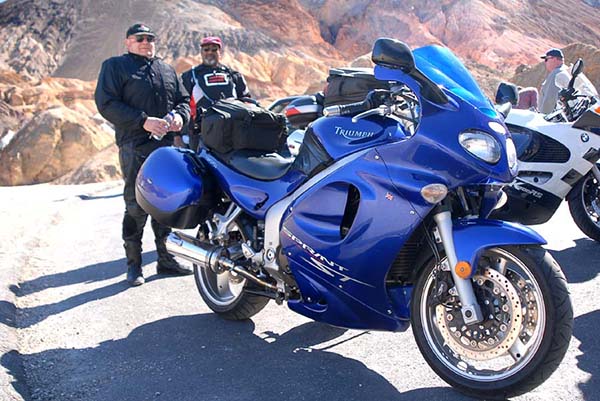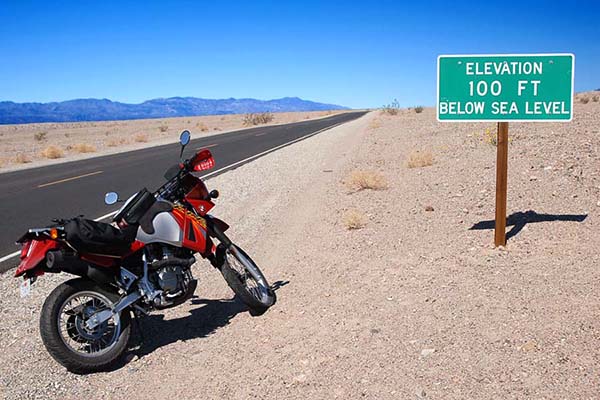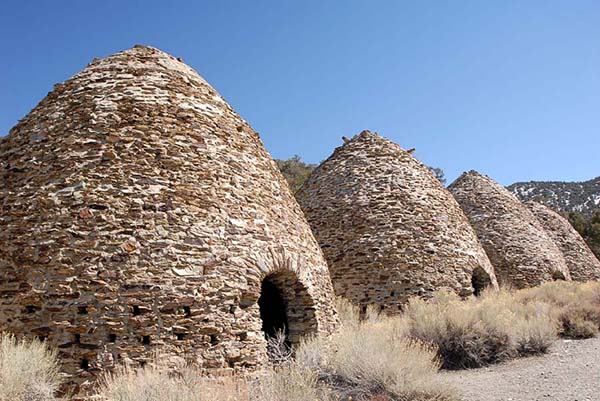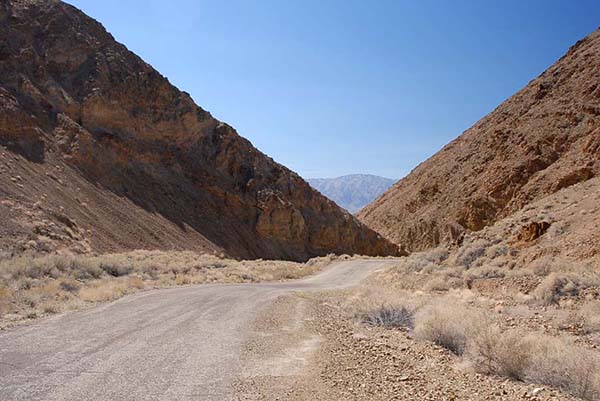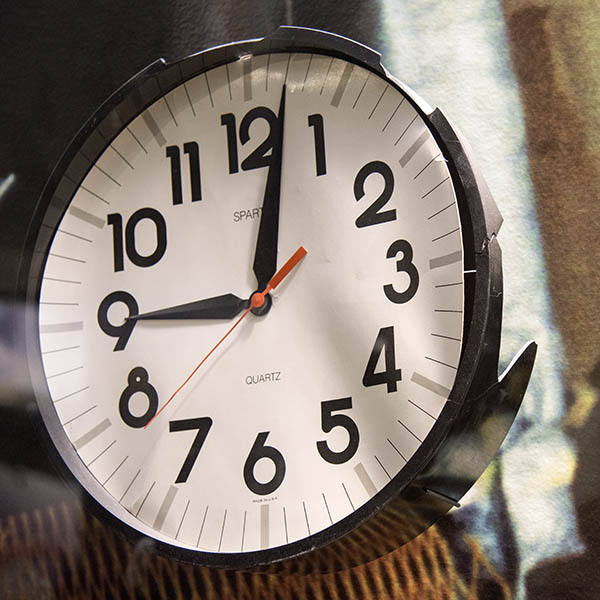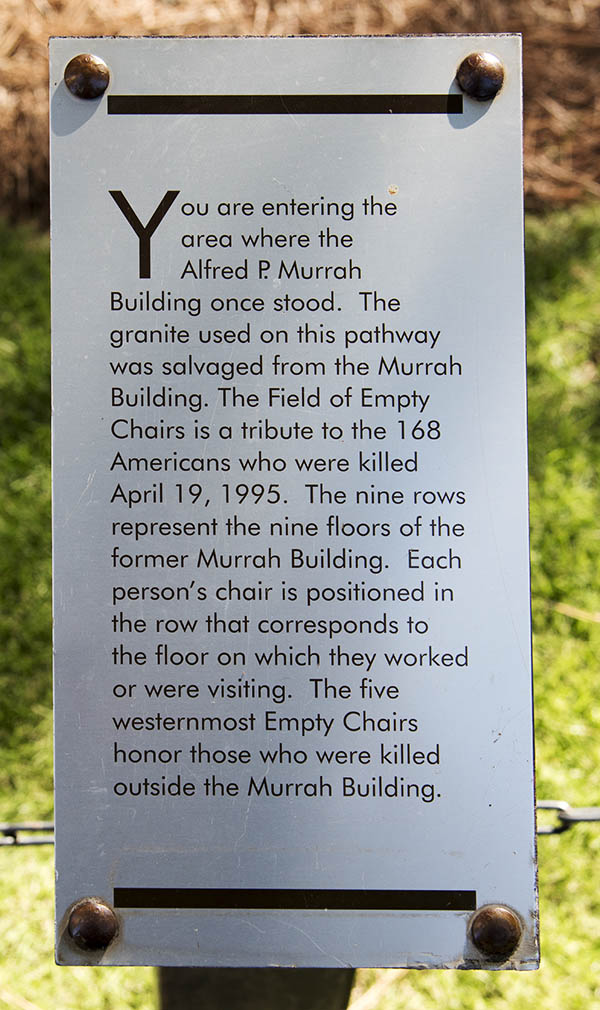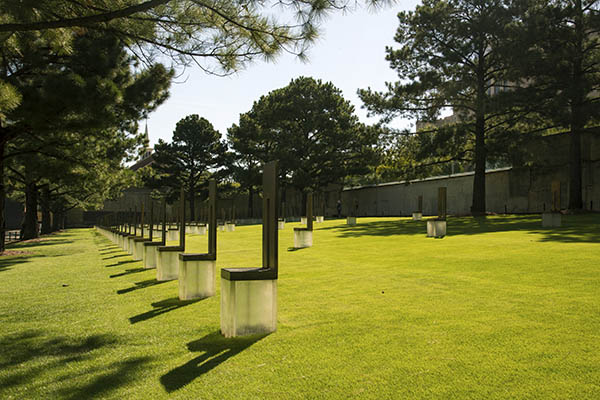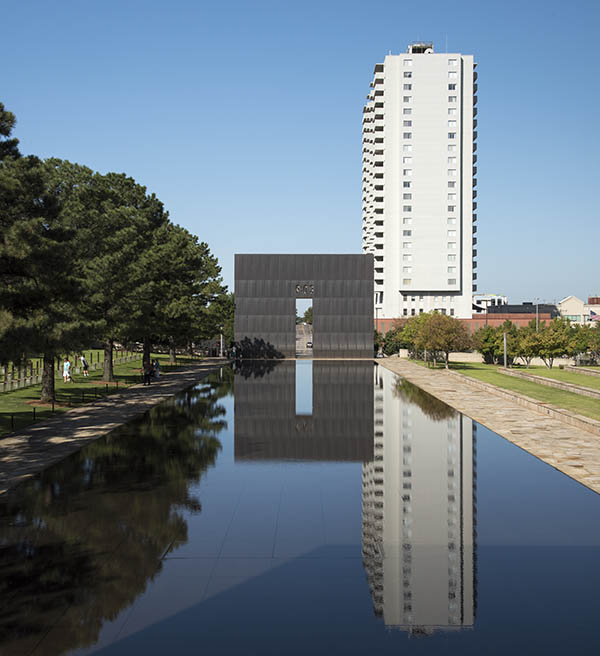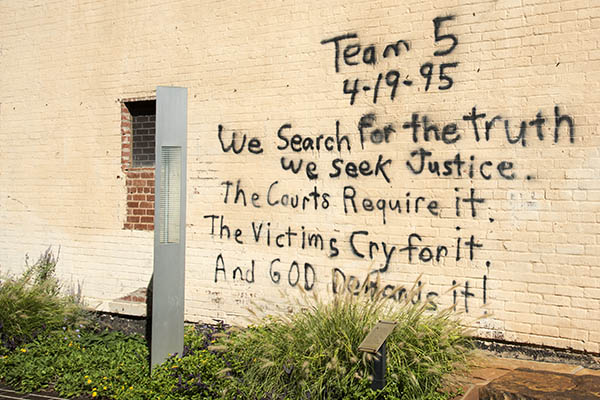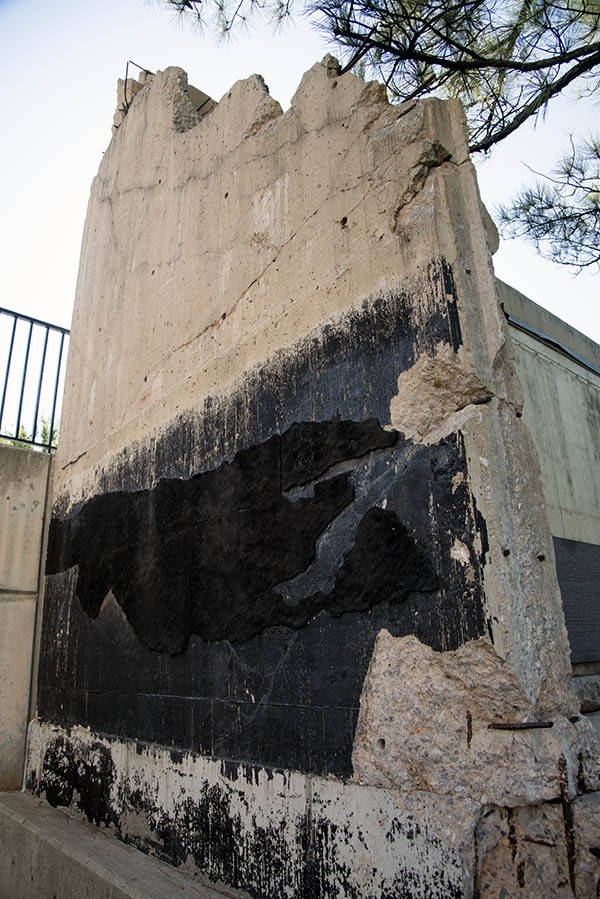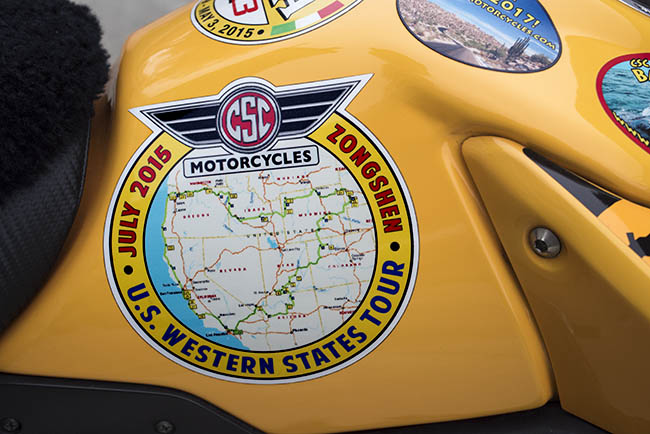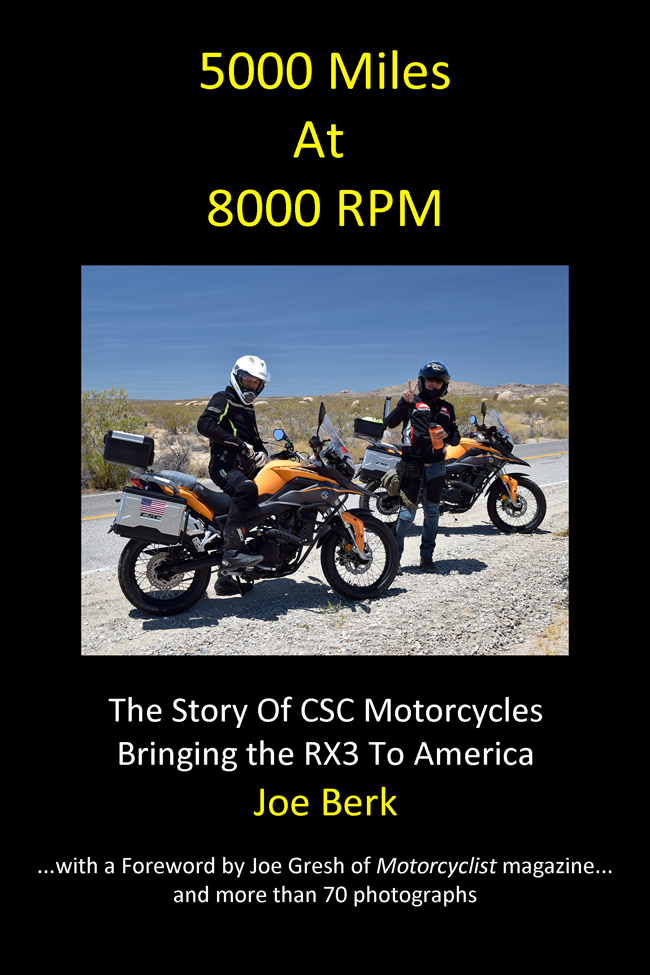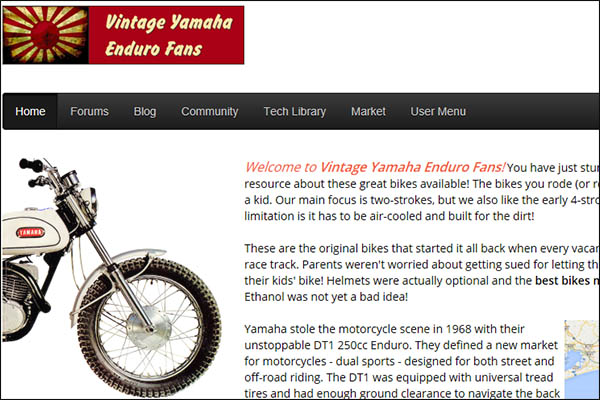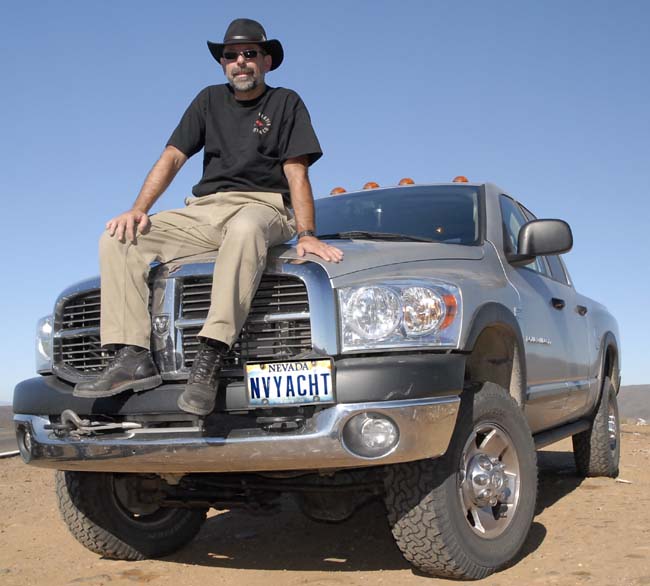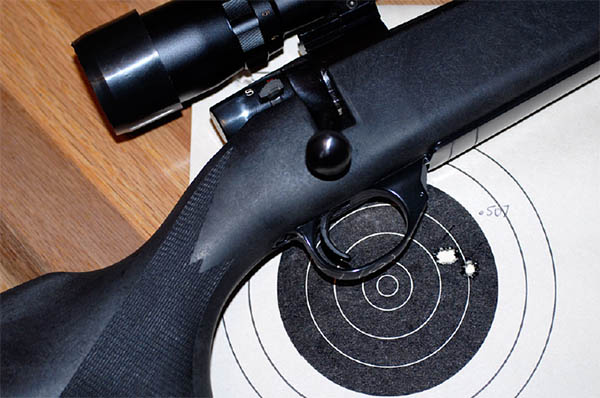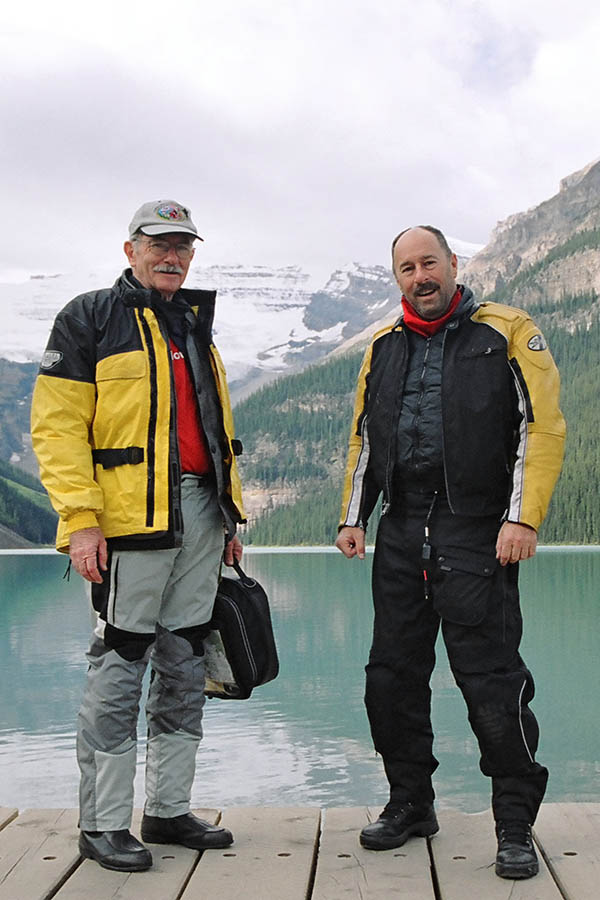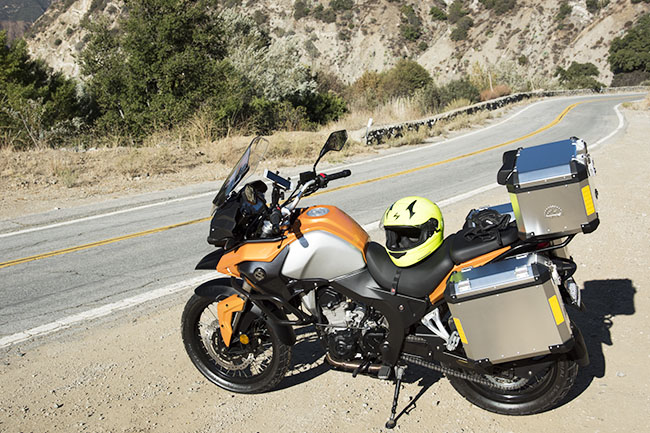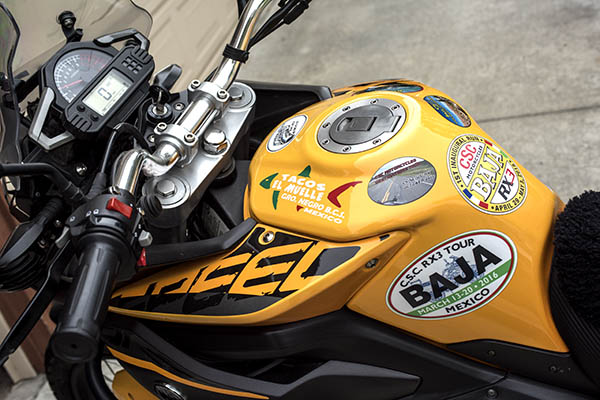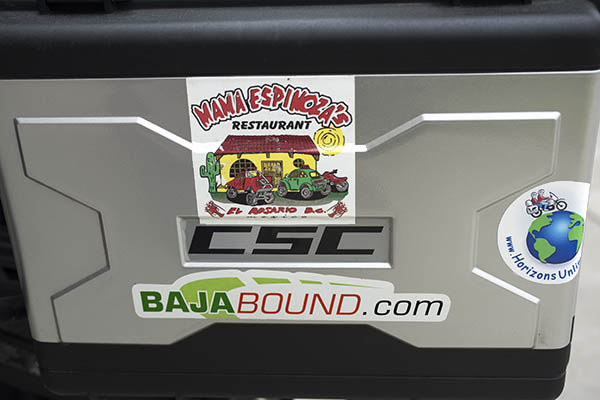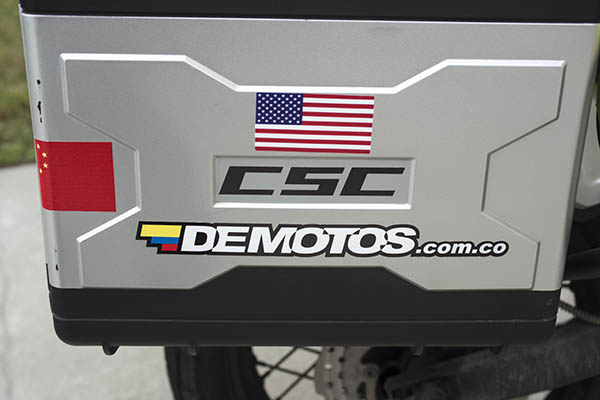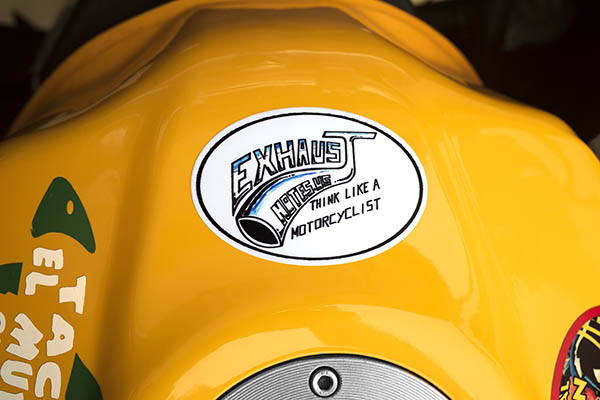
You’ll remember our intrepid troopers and guest bloggers Mike and Bobbie. Well, they managed to exit beautiful Baja after an extended stay of nearly 10 weeks. Here’s the wrap-up to that adventure. Mike, we appreciate your blogs. Ride safe and stay in touch.
Preface: When we last left our heroes (the description probably suits my girlfriend Bobbie more than myself) we were in staying in with a new friend at her house in San Felipe, Baja, Mexico to see what comes next with the COVID19 updates in the USA before deciding when to return.
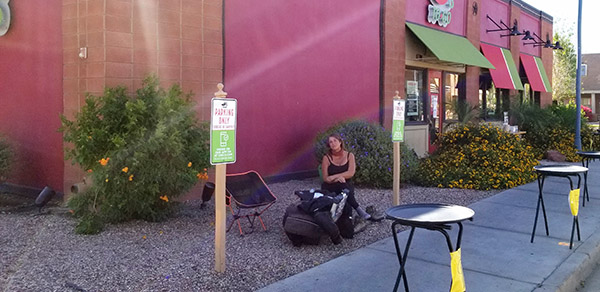
San Felipe seemed the perfect place to ride out the COVID storm. We were in a safe location, plenty of supplies at local stores and the residents seemed to take the warning seriously and were wearing masks, using hand sanitizer, etc. It didn’t take long, however, for most public beaches and really everything to be shut down. Traveling too far outside the city became impossible due to Mexican Army checkpoints turning people around, so it wasn’t worth the risk to be actually “locked out abroad.”
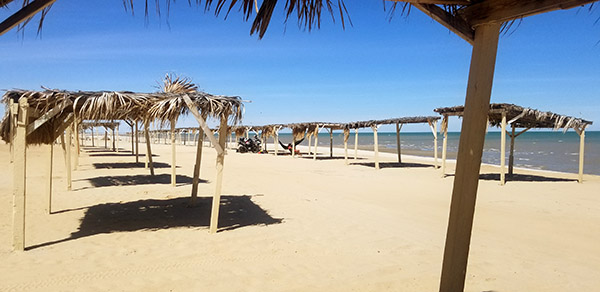
There was one private beach that remained open that we were able to use and moto camp in, and that was Pete’s camp. We had camped here 6 weeks prior when the world was quite different and the camp was about 70% full with campers, with side-by-sides roaring up and down the beach playing Van Halen at an uncomfortable decibel level (and I love Van Halen loud), and everyone was carefree enjoying their vacations. Now, however, the scene was completely different. The beach was abandoned, it was eerily silent with nothing but us and approximately a hundred empty palapas on the beach for miles in both directions. We frequented this beach a few times a week as it was a short 4-mile ride and was our only opportunity to really get out as we cut back on our off-roading in the event we should get injured.
We fully understood how fortunate we were to be lying in hammocks, soaking up the sun on a beautiful beach that kissed the Sea of Cortez while we watched the surreal news that was coming in from America. We held weekly touch points on when and where we should go, if anywhere. Wednesday was an optimal day for these touch points since our plans would have us leave on a Friday thus allowing us 3 days to return to Arizona.
After a month we decided it was time to return as it seemed the supplies (toilet paper, etc.) were being replenished in America while the COVID fatalities seemed to be lowering and our concern that the bubble we were living in would burst quickly if (or when) the virus would make its way to Baja. More importantly, it gave us a solid excuse to get a great weekend of riding in.
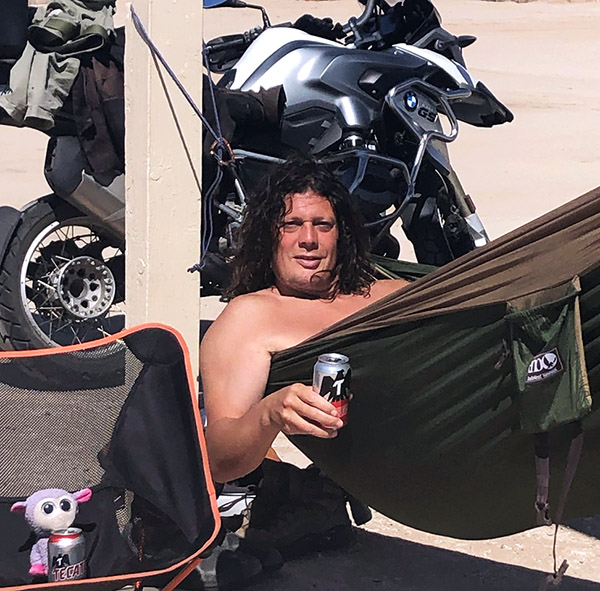
We left on a Thursday afternoon to return to the United States. The ride was beautiful. There was NO line at the border to the point I almost didn’t even place the moto in neutral when going through, whereas normally there is a 1 to 3 hour line. Once inside the United States we were a bit hungry and noticed only drive thrus were open, so we got creative and set up our camping gear outside a Chili’s and had several margaritas (probably not legal, but there’s a pandemic; act accordingly!) and a burger in the parking lot.
We had eyed Kofa National Forest as a decent place to camp, and I had always wanted to visit this area so this was a perfect time since it was extremely isolated. This ensured there’d be no temptations to break social distancing. We were not disappointed in choosing this location. It was a beautiful desert landscape with the setting sun lighting up the mountains surrounding our campsite. The weather was perfect and we could take a moment to gather ourselves with it being our 1st night back in our home country in some time.
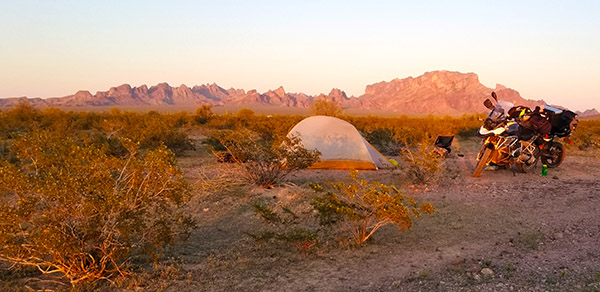
The following day after getting McDonald’s for breakfast (don’t judge; I couldn’t find a Starbucks open for my BMW to get its fix) Bobbie came up with a different route then just the boring I-10 to I-17 we normally take. Great call! It made what would have been a drab highway drive into a longer, but much more scenic ride through little towns and National Forests, where we could really enjoy the break from everything and just be in that moment fully present and enjoying each moment as we lowered off the mountain passes returning to Sedona, and for a few hours forget about the rest of the world as we returned safely home after our nearly 10-week Baja adventure.
So these two adventure riders are on the road, and at last sighting, they were camping in Colorado’s beautiful Mesa Verde National Park. Our two troopers are living the good life. I’m looking forward to their next blog.
All the way, folks.

